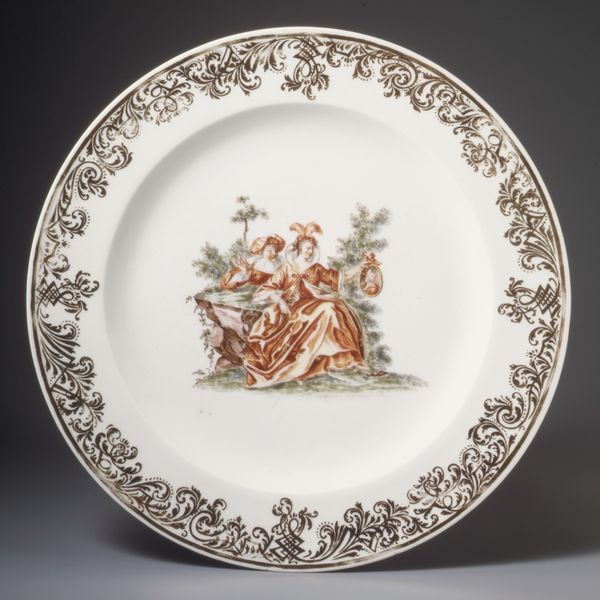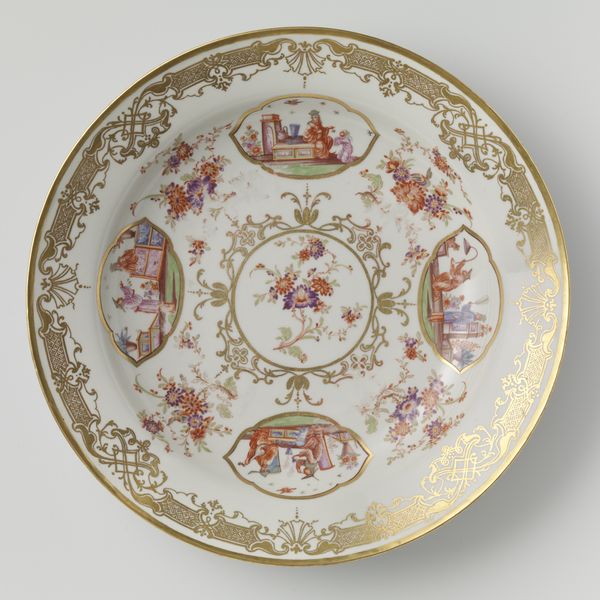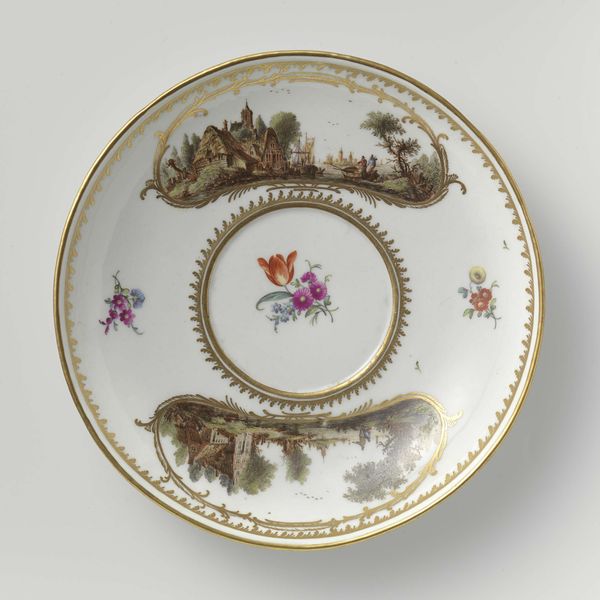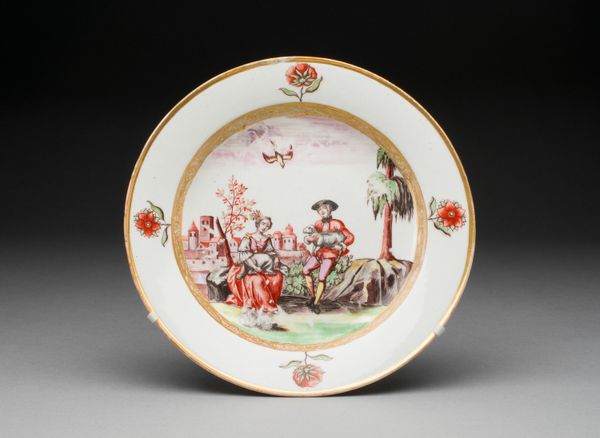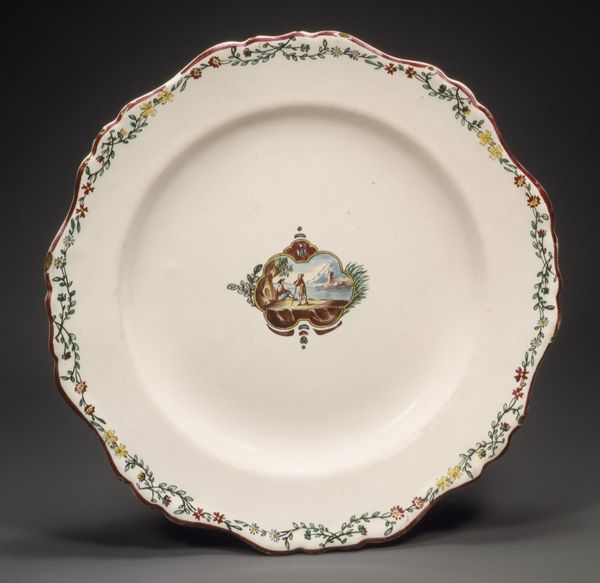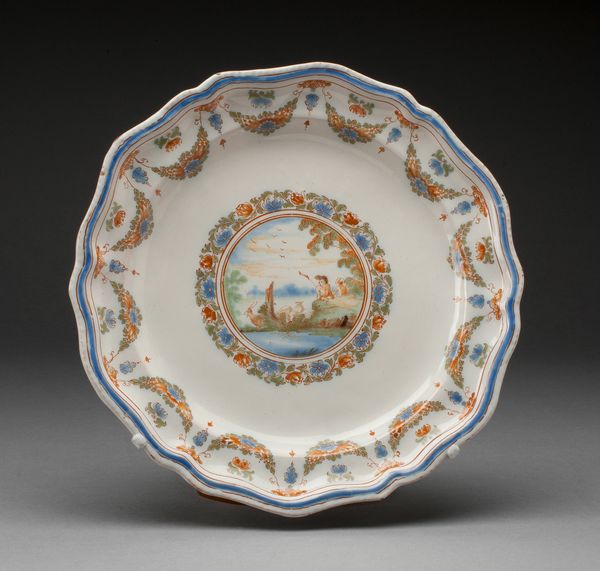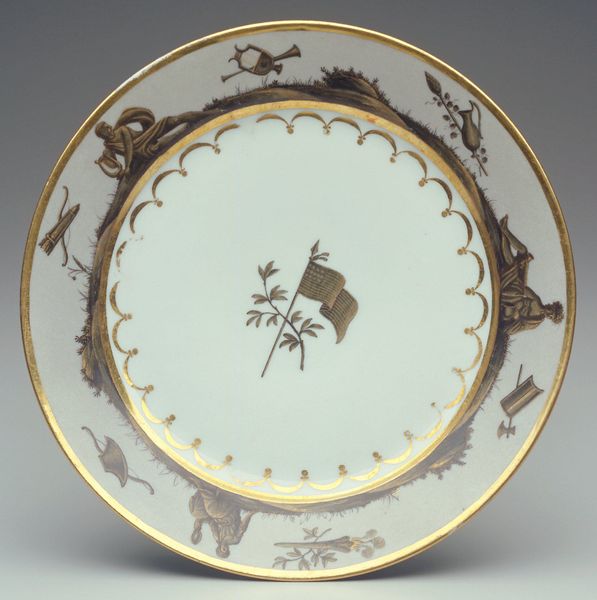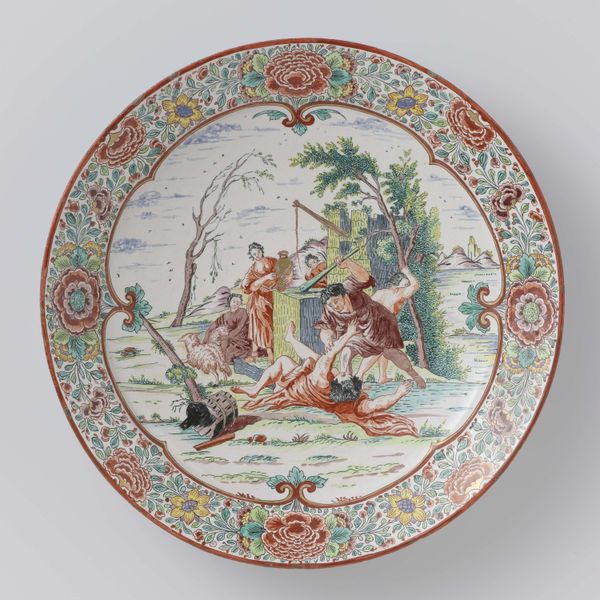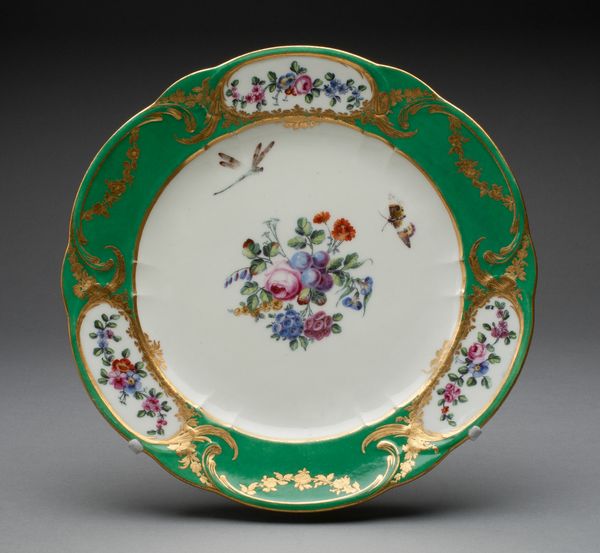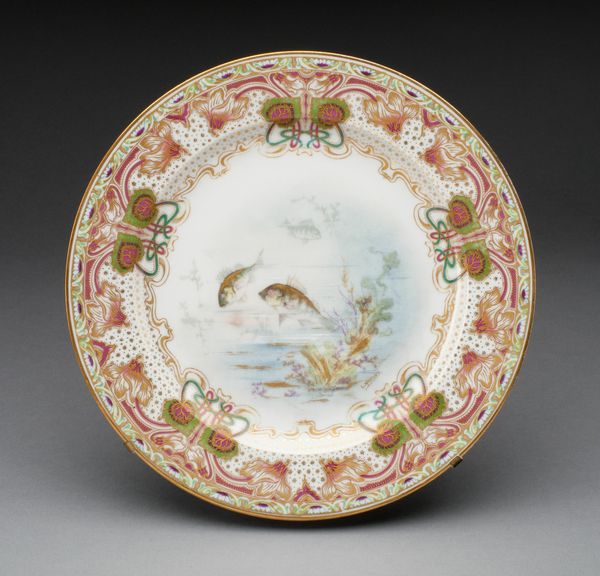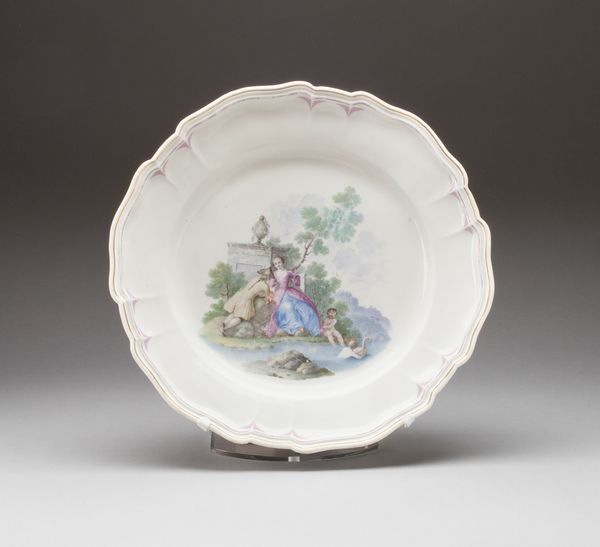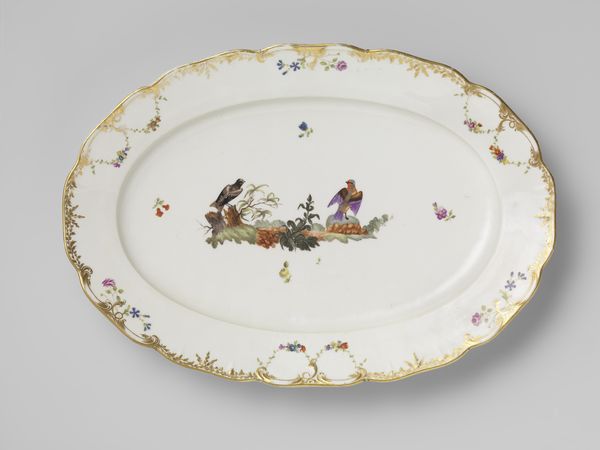
ceramic, porcelain
#
ceramic
#
porcelain
#
orientalism
#
ceramic
#
genre-painting
#
decorative-art
#
rococo
Dimensions: H. 1-7/8 in. (4.8 cm.); Diam. 8-13/16 in. (22.4 cm.)
Copyright: Public Domain
Curator: At first glance, the dominant colour of the painting on this porcelain plate seems to be gold. Editor: Yes, all that elaborate gilding! It certainly exudes an aura of luxury and aristocratic tastes. Where does this object come from? Curator: This is a plate made at the Meissen Manufactory between 1725 and 1740, currently residing at the Metropolitan Museum of Art. It exemplifies the European fascination with East Asian aesthetics during the Rococo period. Editor: Right, that's apparent. This object has Orientalist undertones and an aesthetic sense deeply embedded in the context of European trade with the East. There's this projection, a desire to capture an exoticized and fantasized “genre painting.” The scene it depicts feels like a theatrical stage. Curator: Absolutely, porcelain, often referred to as "white gold," carried immense symbolic weight, signifying power and status. It reflects not only artistic trends but also broader socio-political dynamics and global exchanges of the time. You see it rendered in a palette of understated pastel tones—lilac, apricot, umber, which add to its decorative appeal. The cultural memory of luxury is built into it. Editor: The central tableau, though, feels oddly static. I mean, those figures are frozen in an idealized moment. Is this meant to symbolize authority, or an aspiration? I wonder about the socio-political context within which these objects of elite tastes circulated: The lavish use of gold hints to a desire for excess and ostentation. Who gets to consume art and own this kind of luxury objects is a relevant and perhaps urgent question. Curator: You've hit upon something vital—this object, intended for the highest levels of European society, reveals the projection of power. And consider, too, the craftsmanship required. Each detail is carefully rendered, which demonstrates control over the artistic creation, and this in itself serves as a signifier of status. I am always curious to explore the symbolic meaning behind motifs, techniques, or compositions that create collective beliefs across time. Editor: I agree, but beyond the pure technical virtuosity, I still see that these kind of decorative art pieces speak to issues of appropriation and exoticization, deeply linked to the colonial project. Thinking about it helps us consider both the beauties and the problems in this dialogue between cultures and commerce. Curator: That’s precisely what objects like these offer—they reflect enduring stories of our cultural fascination with beauty. Editor: And prompt critical investigations of how aesthetics, wealth, and representation intersect.
Comments
No comments
Be the first to comment and join the conversation on the ultimate creative platform.
